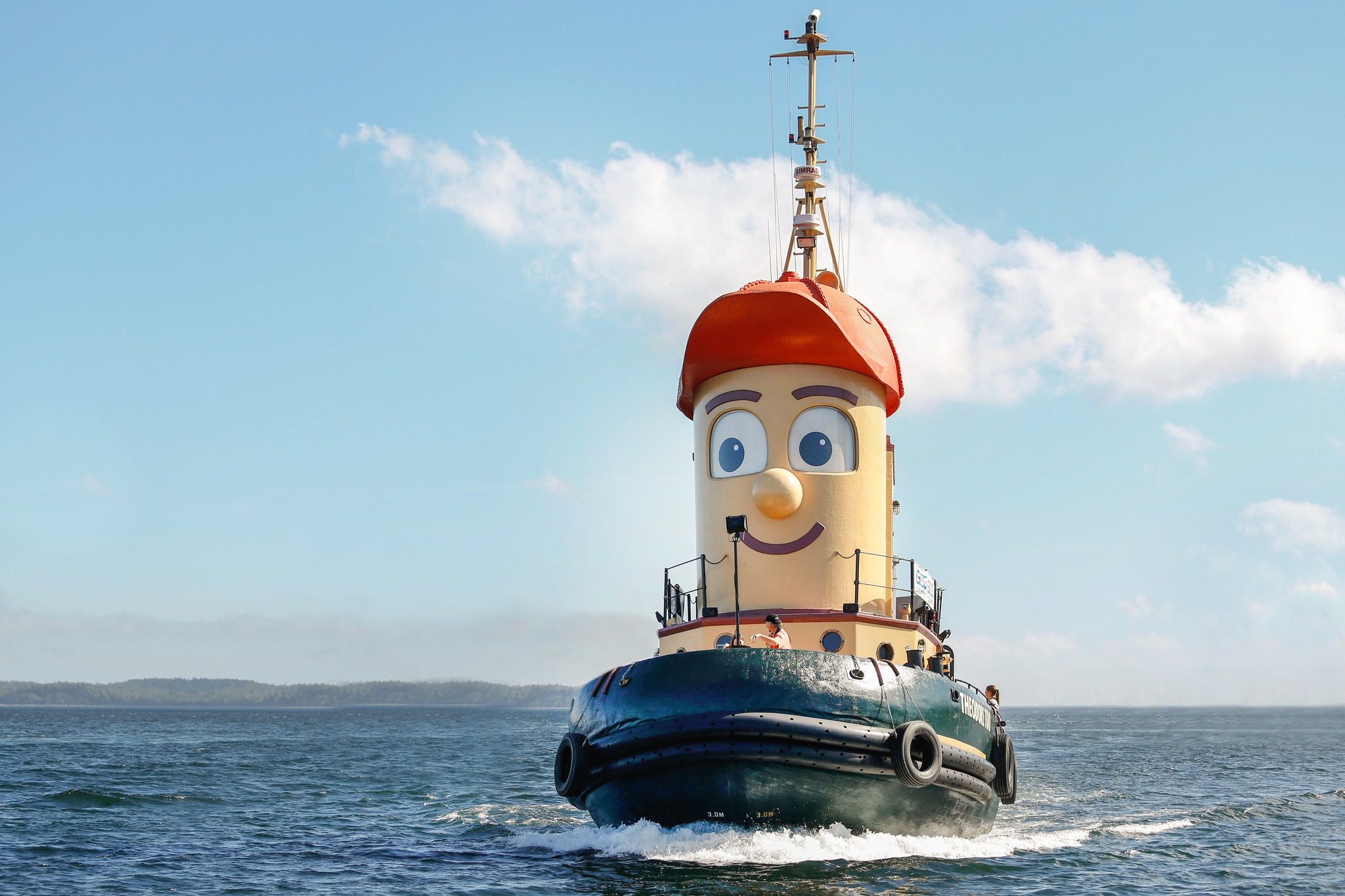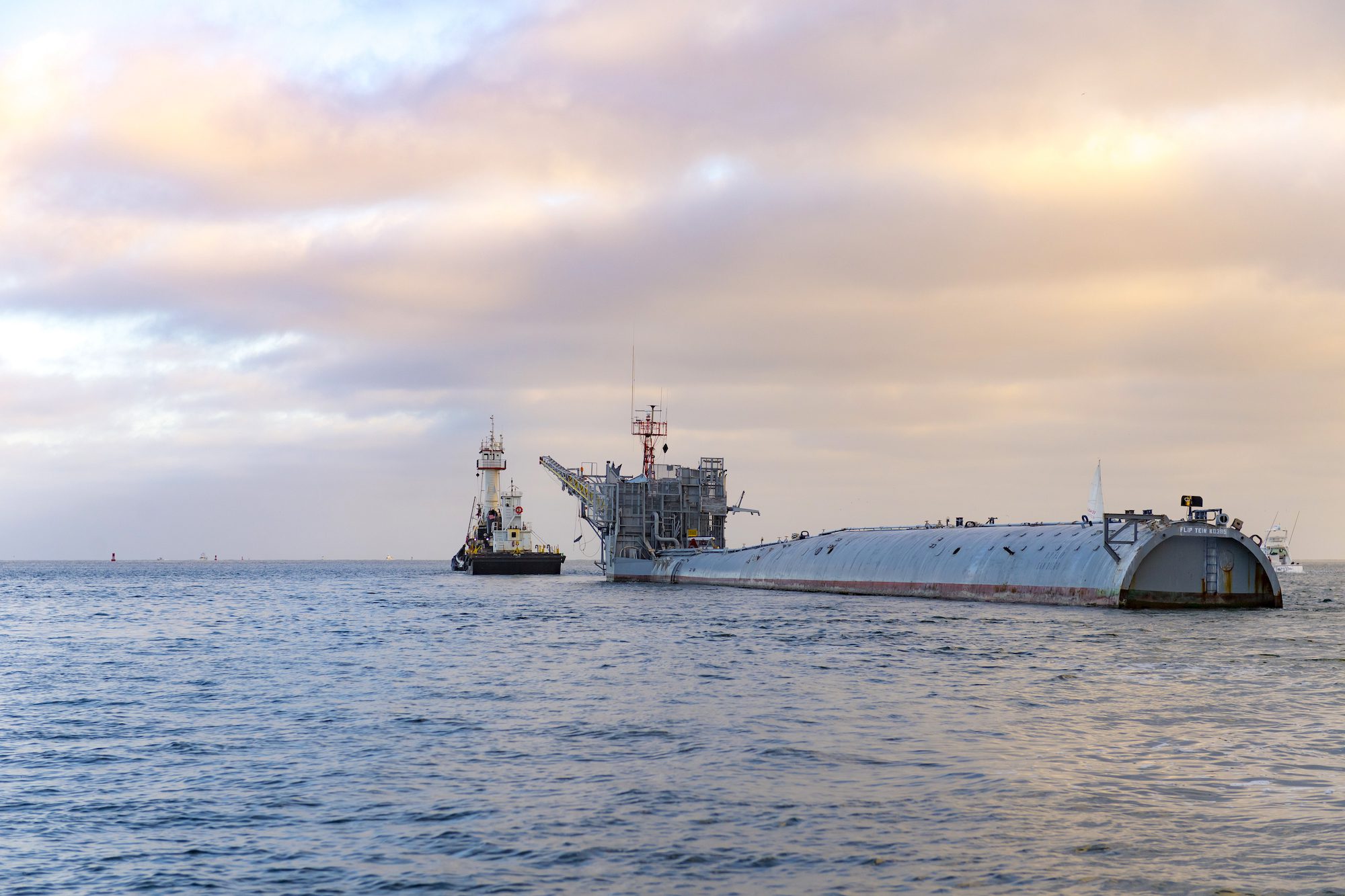Viking Lady, a 6100 DWT gas-powered offshore supply vessel owned by Eidesvik
By Fathom-CTech,
This week the spotlight turns to auxiliary power and electrical loads with a particular focus on inefficiencies within electrical systems.
The topic of reduction of auxiliary power and electrical loads is wide and varied e.g. from simply switching off the lights right through to waste heat recovery. In this article, we are focusing on one very specific area – that of efficiency gains in electrical power generation systems.
Overcoming the inefficiencies of electrical systems on-board vessels presents several potential hurdles given the complexities of the interaction between propulsion systems and electricity generation that exists on many vessels.
One of the inefficiencies affecting modern-day vessels is caused, in part, due to what is also an increased efficiency measure. Nowadays, on-board electrical systems may operate whilst at sea directly through power supplied by the main diesel engine, instead of auxiliary generator sets, therefore taking advantage of the higher combustion efficiency and reducing total fuel consumption. This direct conversion of energy from the main engine to electrical appliances is enabled by a shaft generator.
However, the chink in the strategy is that since electrical systems need to operate off fixed frequencies and voltages, the variability of output rpm supplied by the main engine may be constrained when using this method. This means that the engine’s other function of supplying power for propulsion work may have its efficiency compromised e.g. the propeller’s efficiency (if using a controllable pitch propeller) may be suboptimal, or alternatively the ship may be constrained in its freedom to vary its speed (slow steaming).
Hybrid Shaft Power Generator
However, options to address these inefficiencies do exist, allowing engine speeds to be altered and frequencies to be stabilised simultaneously. Rolls-Royce’s Hybrid Shaft Generator (HSG), a relatively new innovation introduced to the market in 2010, is one such system. It enables changes in engine speeds to occur without having knock-on effects on the frequencies and voltages supplied to the switchboards. This is because the HSG converts the power that emanates from the primary shaft generator into a uniform frequency and voltage that the ship’s electrical systems and appliances can utilise.
In addition to facilitating the fluctuation of engine and propeller speeds, the HSG can also act as a motor that supplies power to the propeller; this is an additionally useful mechanism that enables the main engine to be shut down when a vessel is idling or cruising at slow speeds. In this scenario, electrical power is required from another source on board, perhaps from auxiliary gensets or storage (batteries) or another source e.g. solar PV. This would exploit the potential for such a system to offer an efficiency or maintainability benefit over running a main engine at low load.
For vessels that operate with variable speed profiles, where engine-speed changes and slow cruising are required, the opportunity to lower or even completely close down the engine’s output could offer fuel-saving and emission reduction benefits. OSVs, fishing trawlers and small ferries are obvious examples of the sort of vessels that the HSG could bring such benefits to.
Despite limited in-service activity to date, the HSG is starting to infiltrate the market. Norwegian operator, Torghatten Nord AS, which operates small passenger-car ferries in the northern regions of Norway, is expecting delivery of four LNG-fuelled vessels later this year, each complete with an HSG. For the moment, Rolls-Royce offer example data for a PSV fitted with an HSG; by their estimation the benefits include a 300 kW reduction in zero pitch losses (when the vessel requires no propulsive thrust) per propeller due to lower engine rpms, equating to an annual fuel saving of 770,000 litres. This figure emanates solely from reduced engine activity and does not take into account the fuel savings derived from the 50% reduction in the use of auxiliary gen-sets that Rolls-Royce also claims the PSV would experience.
Despite the dearth thus far of objective in-service data, Rolls-Royce’s belief in the HSG is evidenced from the incorporation of the technology into its Environship concept that was recently awarded the Nor-shipping Next Generation Ship Award – high acclaim from a country that is currently devoting a great deal of research and resource to developing more sustainable shipping methods. The Environship has progressed from its conceptual beginnings into a design and building stage, with Norwegian transportation company, Nor Lines AS, already primed to receive two of the advanced technology cargo vessels currently under construction, with an anticipated delivery date set for late 2013.
Further technologies are available that offer solutions for different inefficiencies that can afflict electrical power systems on-board vessels and keep fuel consumption unnecessarily high. One of these inefficiencies, in the instance of diesel-electric propulsion systems, is typically the power transmission losses that occur when electricity is conducted through various transformers between generator and motor.
Low Loss Concept
With Wärtsilä’s Low Loss Concept (LLC), the aim is to limit such transmission losses by omitting supply transformers in the path of frequency converters, in particular those supplying electric propulsion.
Wärtsilä claims that various features of the LLC system contribute to improved transmission efficiency. A common 30 degrees phase shifting transformer, used instead of multiple transformers typical of conventional electric distribution systems, helps to reduce overall short-circuit current level by 15% to 20% according to Wärtsilä. This translates to a 10% reduction in the current that is supplied from the switchboard to the frequency converter, meaning that low instead of high voltage components can be installed, leading to weight and volume reductions of up to 35-40% compared to similar electrical systems.
The LLC has been available since 2004 and has seen over 70 installations mainly in offshore support vessels. Eidesvik Offshore, a Norwegian operator of a variety of offshore support vessels, has taken a lead in environmental awareness and innovation; two of the company’s recent new-build OSVs, the Viking Lady and Viking Prince, are fitted with a host of Wärtsilä machinery and propulsion technologies including the Low Loss Concept. A further two vessels of similar class and design are currently in the pipeline.
However, the technology is beginning to break through into other commercial shipping markets; the LLC’s first application on a passenger vessel, for instance, came in 2008 for a Canadian Shipowner, Transport Desgagnés, which had ordered a new 95m multi-purpose vessel for the transportation of passengers, vehicles and containers.
‘No-Loss’ Drive
A technology that is intended to provide similar solutions to that of the Low Loss Concept is the Stascho ‘no loss’ drive manufactured by Stadt in Norway. Energy losses are reduced due to the omission of large transformers; Stadt estimates that total electric losses do not exceed 5%, comparing favourably to conventional AC drive systems, which see losses in the region of 13-16%. The company also claims that the system can reap up to 45% in fuel savings although the company has yet to testify the context in which such savings are claimed and the baseline to which they are compared.
In line with other technologies aimed at reducing electrical system inefficiencies, the Stascho is gradually growing in prominence in the market. Since its establishment in 2008, the system has mainly received attention from the Norwegian maritime industry; six vessels are currently operating with the system, including seismic research and fishing vessels. However, the system has the capacity to be installed on any size or class of vessel according to the company, with a potential power output of 100MW.
The Stascho seems to have taken a significant step in its exposure to the maritime industry outside of Norway with an agreement signed between Stadt and Samsung Heavy Industries in December 2011 to supply an LNG-electric small passenger vessel to Incheon Port Authority, South Korea, complete with the Stascho system. The vessel should come into operation later this year.
It is clear that, despite the relative infancy of some of these technologies, they are building steadily. Whilst they may not be as ‘headline grabbing’ as some other efficiency technologies, they have solid principles and address specific problems and inefficiencies that exist in electrical power generation.
Ctech also offers profiles on other numerous energy-efficiency devices including those for regulating power distribution to specific on-board components, such as pumps and fans. To join click here.

 Join The Club
Join The Club










